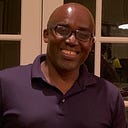Harlow vs Fitzgerald — the Qualified Immunity Doctrine Matures
By Nana Dadzie Ghansah
If the 1967 Supreme Court ruling in the case Pierson vs Ray birthed the doctrine of “Qualified Immunity”, the 1982 decision Harlow vs Fitzgerald cemented the concept.
Background
In 1965, Lockheed was awarded the contract to build the C-5A Galaxy cargo plane for the Air Force. Even though Boeing had the best overall design, Lockheed had the lowest bid and thus won. Their bid was for $16 million per plane for a project total of $1.9 billion. In a few years, the cost of a plane amount would balloon to $40 million.
The project was plagued by technical difficulties and significant cost overruns which both Lockheed and the Pentagon hid from Congress. There was however an engineer and management analyst in the Department of the Air Force who knew how much more the project was costing taxpayers. He first discovered the cost overruns on a routine visit to the Lockheed complex in Marietta, GA in January 1966. He kept up with the overruns even though Lockheed tried to hide them. His name was Ernest Fitzgerald.
With time, Congress got wind of how expensive the C-5A project had gotten. On November 13, 1968, with the unexpected costs standing at $2.3 billion dollars over budget, Fitzgerald was invited to testify before…
